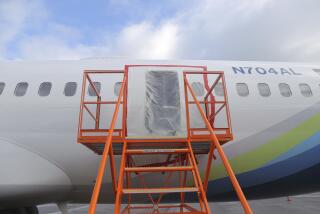Snail’s Pace in Airliner Safety
- Share via
FBI Director Louis J. Freeh has reiterated an idea expressed by some federal officials since late last year: that it was a catastrophic mechanical failure that brought down TWA Flight 800 last July, killing all 230 aboard.
“The evidence is certainly not leading in the direction of a terrorist act. It is in fact moving in the other direction,” Freeh said on a television news show Sunday. But he stressed that no official conclusion on the cause of the TWA disaster has been reached.
Such a slow pace is not unusual in these matters. It took two years, for example, to officially rule that a bomb had caused the explosion of Pan Am 103 over Lockerbie, Scotland, in 1988.
Even without a final report, you might think that corrective action would occur quickly. After all, the National Transportation Safety Board, and now Freeh, has emphasized the possibility that Flight 800 disintegrated because a spark ignited a volatile air-fuel mixture in its central fuel tank.
Well, here’s the snail’s-pace chronology that followed the “urgent” NTSB recommendations on Dec. 13 for changes that it said could prevent an explosion of this kind: The Federal Aviation Administration had 90 days to respond and announced in February that it would issue a notice for public comment in the Federal Register within 30 days. The notice finally appeared in April, at which point another 90-day period commenced. This means that the recommendations cannot be acted on until July.
The Clinton administration and Congress ought to find a way to shorten this process. If a streamlined process had been mandatory, the implementation of one or more of the changes to prevent central fuel tank explosions in more than 1,000 active U.S. commercial jets might already be underway.
More to Read
Sign up for Essential California
The most important California stories and recommendations in your inbox every morning.
You may occasionally receive promotional content from the Los Angeles Times.













